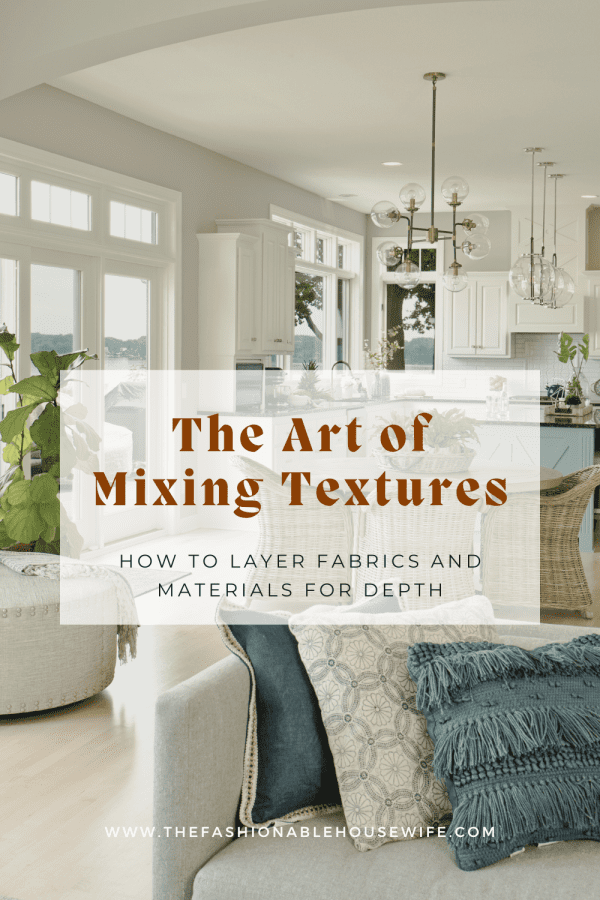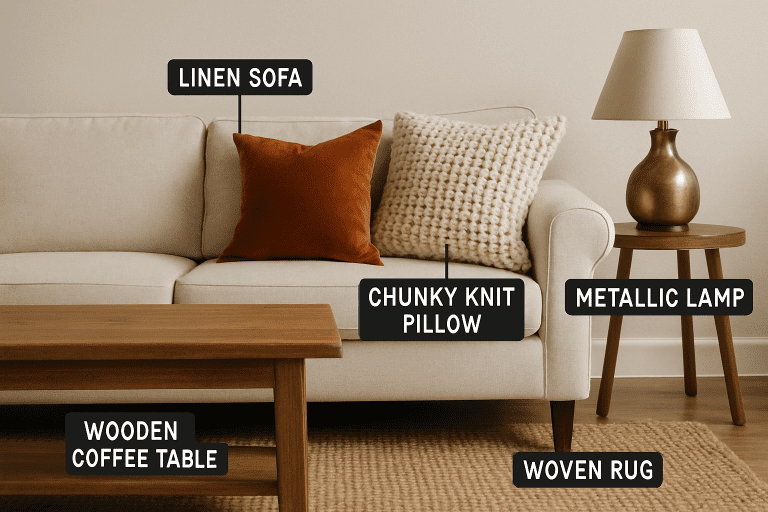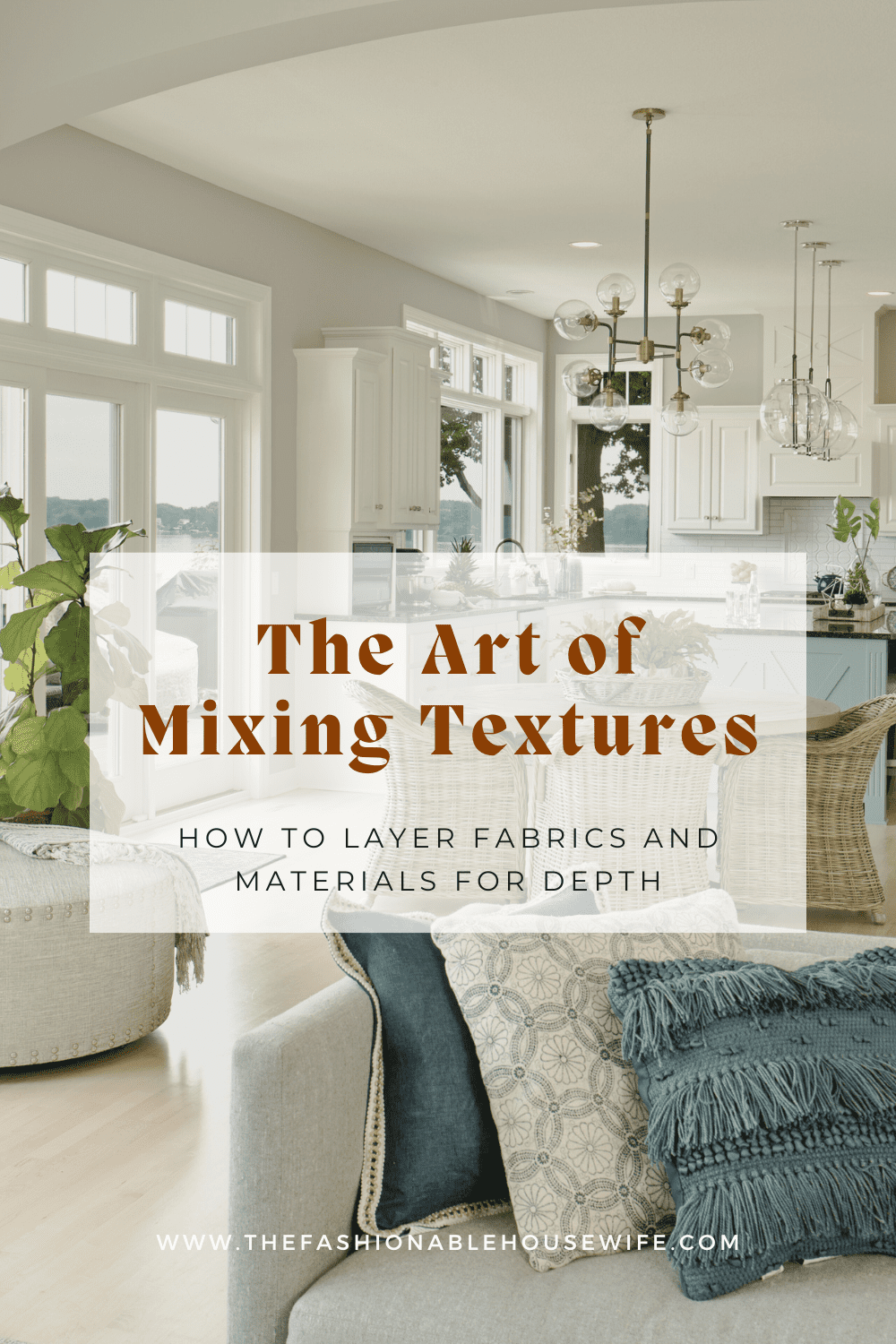The Art of Mixing Textures: How to Layer Fabrics and Materials for Depth

Key Takeaways:
- How to layer fabrics to add depth, warmth, and personality to a space.
- Combining different materials enhances visual interest and emotional impact.
- Hands-on exploration of textures can guide cohesive design choices.
Understanding the Importance of Texture in Interior Design
Texture is one of interior design’s most compelling yet often overlooked elements. More than just a backdrop, texture draws the senses in, transforming a visually flat space into a retreat that feels alive and welcoming. Whether it’s the soft wool underfoot or the gleam of a metallic accent, the interplay of different surfaces helps to tell a room’s unique story. Visiting local Salt Lake City home decor shops is a great way to get hands-on with sample textures and materials, so you can envision how they’ll work together in your home.
Thoughtful texture mixing is essential for visual appeal and creating spaces that feel balanced and accessible. Consider how a room feels: Is it inviting and layered, or does it feel stark and unfinished? The emotional impact of texture comes from its ability to add depth without detracting from the harmony of the space. By mastering the art of combining different fabrics and materials, you’ll achieve a comfortable and stylish room.
Start with a Neutral Base
The foundation of any well-layered space starts with a neutral background. Neutral finishes allow you to experiment with different textures without the risk of visual overload. Creamy walls, taupe or grey area rugs, and classic linen or cotton sofas are timeless staples that make textural diversity stand out. Choosing a neutral base allows you to incorporate bolder, more tactile elements while ensuring the room remains cohesive.
Neutral palettes also act as a calming force, especially in busy households or open-concept spaces. When walls, flooring, and larger furniture feature understated colors, swapping seasonal accents or experimenting with trend-forward materials becomes easier—all while keeping your space grounded and inviting.
Incorporate a Variety of Materials
Mixing multiple materials brings visual richness and a pleasing rhythm to your environment. Consider pairing the smoothness of marble countertops with the texture of rough-hewn wood beams, or offsetting the glossy finish of metallic fixtures with woolen throws and velvet cushions. Contrasting hard and soft, shiny and matte, creates a layered and thoughtfully designed look.

Ideas for Combining Materials in Your Home
- Glass coffee tables juxtaposed with chunky knit poufs
- Leather sofas complemented by nubby tweed or velvet pillows
- Metal lighting fixtures above rustic wood dining tables
Each contrasting combination adds a unique character to a space while enhancing the overall design narrative.
Layer Soft and Hard Elements
Balance is critical when mixing textures. If your space leans heavily on solid, hard surfaces—think concrete floors, stone fireplaces, or sleek cabinetry—soft furnishings play an important role in creating comfort and warmth. Area rugs, draperies, and throws are not just decorative; they soften the acoustics of a room and make it more inviting.
Equally, in a space dominated by plush fabrics and rounded forms, adding elements such as glass tabletops, polished metal, or raw brick can introduce dimension and modernity. Pay attention to each room’s tactile experience, ensuring harmony between all the textural layers.
Play with Patterns and Weaves
Textural interest goes beyond just materials. Weaves, patterns, and surface designs contribute to a room’s dynamism. Introduce visual intrigue with a woven jute rug, a herringbone wood floor, or a boldly patterned cushion. Chunky knits, basketweave throws, and decorative trims can all add variety without overwhelming the eye.
The experts at House Beautiful recognize that layering woven elements and bold prints can even make smaller rooms feel cozier and more stylish. The trick is to play with scale and distribution throughout your home, letting the patterns flow naturally instead of crowding one area.
Use Rugs to Tie Everything Together
Few design elements have as much power to anchor and harmonize a space as rugs. Layering rugs is a popular and effective way to introduce warmth and dimension. For example, consider placing a thick, high-pile area rug atop a larger, flat-woven option. Not only does this combination provide underfoot comfort, but it also makes the seating area feel defined and cohesive.
Mixing rug textures—a shag atop a sisal, or a bold print layered with a neutral base—allows you to create zones within open-plan layouts, guiding the eye and adding character to every corner.
Experiment with Patterns
Patterns can energize and reflect your personality in a room. Choose a single color palette and mix pattern scales to avoid chaos—pairing small-scale motifs with bold, oversized prints. Use patterned accents like curtains, cushions, or ottomans as strategic pops of interest.
Remember to distribute patterns evenly throughout the space to maintain balance. The interplay between various prints and solids enlivens a room without feeling busy or disjointed.
Incorporate Natural Elements
Nature is an endless source of texture inspiration. Bringing pieces like reclaimed wood furniture, seagrass baskets, stone vases, or lush green plants indoors introduces authenticity and a grounding energy. These organic textures provide a calming counterpoint to more polished surfaces, reflecting the tactility and unpredictability of the outdoors.
Natural elements blend seamlessly with almost any design style and connect your home to the world outside—an approach that feels especially vital in today’s fast-paced, screen-heavy world.
Final Thoughts
Mastering the art of layering textures is more than just piling on fabrics and finishes; it’s a process of thoughtful curation. By starting with a neutral base, introducing a mix of materials, balancing soft and hard surfaces, incorporating intricate weaves and striking patterns, using rugs creatively, and adding the organic beauty of nature, you can transform any space into a multidimensional haven that feels both welcoming and sophisticated. The result is a home that resonates not just with the eye, but with every sense.

